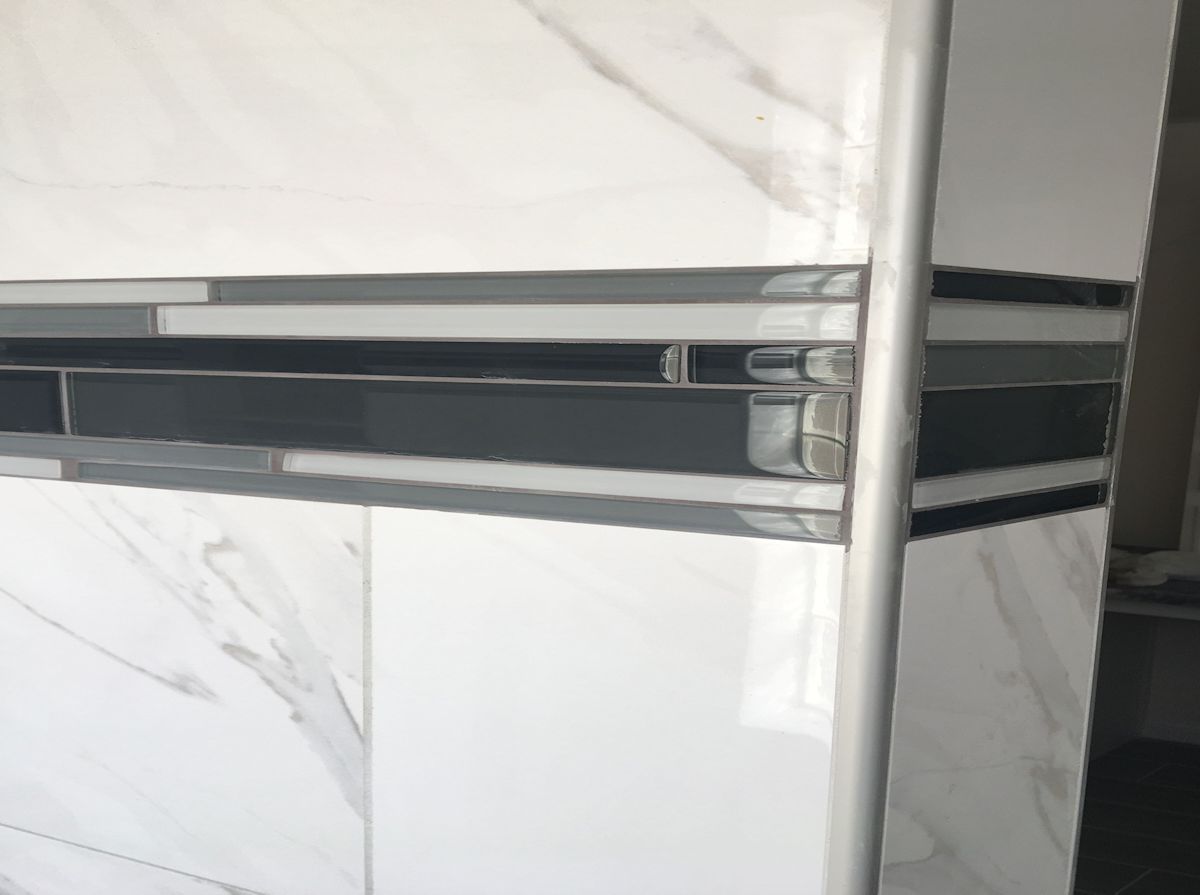
5 Options to Finish the Edges of Tile
Dear Gail: We’re remodeling our master bathroom and want to know the different ways we can finish the exposed edges of our shower tile. Karen
Dear Karen: You have several options to make the transition from the tile to the wall a smooth and attractive edge. First, you’ll want to consider the style or look you want to achieve. Then the cost or what you have budgeted.
You’ll want to calculate the number of linear feet you’ll need. In addition to the side edges, remember to include around your shower niche, front of the bench, step into the shower, around any windows, as well as any exposed edges if you’re doing a walk-in versus a shower door. For any areas where you are going to the ceiling, you won’t need a trim piece. But if not, make sure to include them in your calculation. This is important as the cost may be a factor in steering your decision. Depending upon your tile and design, all the edges do not need to be treated the same.
Here are 5 options to consider.
1. Metal Edges. These have become very popular in the last couple of years. You’ll hear them referred to as Schluters ®, a brand name, although there are many others available. They come in a wide range of profiles, sizes, and finishes. They have flat, rounded, curved, square, chrome, brushed nickel, antique nickel, bronze, and even black colors. Choose a metal color that coordinates with your shower head for a cohesive feel.

2. Rail Moldings. Many tiles have coordinating trim pieces that can give you a seamless transition. They come in different sizes and styles. You have a single bullnose, which usually is 3” w x 12” l. One side is straight, with the top having a slight curve. There are also chair rails, pencils, quarter-round, and half-round moldings. If your tile does not have these, you can select one that closely matches or one that gives you an attractive contrast. When selecting a contrast piece, look to the other tiles you are using for color direction. You’ll find most of these in ceramic and stone. One thing to be aware of when looking is to make sure all edges of these pieces are finished, especially with the new resin materials. These are normally meant to go between tiles and not as a finished edge. Even if the sample board shows all finished edges, ask before ordering, my own lesson learned.<

3. Create your own Bullnose Edge.When you have a tile that does not have a matching trim piece, and you do not like the look of metal or contrasting edges, your installer or granite fabricator can make a single bullnose from your wall tile. This is not something I would suggest for a DIY’er unless you’re very experienced as you’ll probably end up with a lot of unusable tiles. Before installation, the edges have to be ground, sanded and polished to create a rounded finished edge. So this will probably be your most expensive option because it is a labor-intensive process. It is not something you can do with a ceramic tile as the color is not solid throughout. What you’d end up getting is a contrast on the edges anyway. This can also be done with your solid surface countertop material.
4. Mitered Edges.If none of the above are to your liking, your installer can also miter the edges of your tiles. So instead of a straight cut, they are cutting on a 45-degree angle. They do this as they are cutting the tile on-site; it is not something they have to bring back to the shop to do as they have to do when creating a bullnose. Typically there is no additional charge as they have to cut the edges anyway, but some installers will charge more as it does take more time. Same as creating a bullnose, this works best with porcelain and stone materials, not ceramic, especially with exposed sides. Plus, ceramic tends to crack easier.

5. Caulk or Grout Edge. This is the most cost-effective option as you’re not buying additional pieces. It works best with mosaics, porcelain, and tumble stone materials. I would not recommend this with any ceramic tile since the color of the tile does not go all the way through. The edges should have a nice clean finished edge. If they are raw or uneven, I’d recommend one of the above options.


